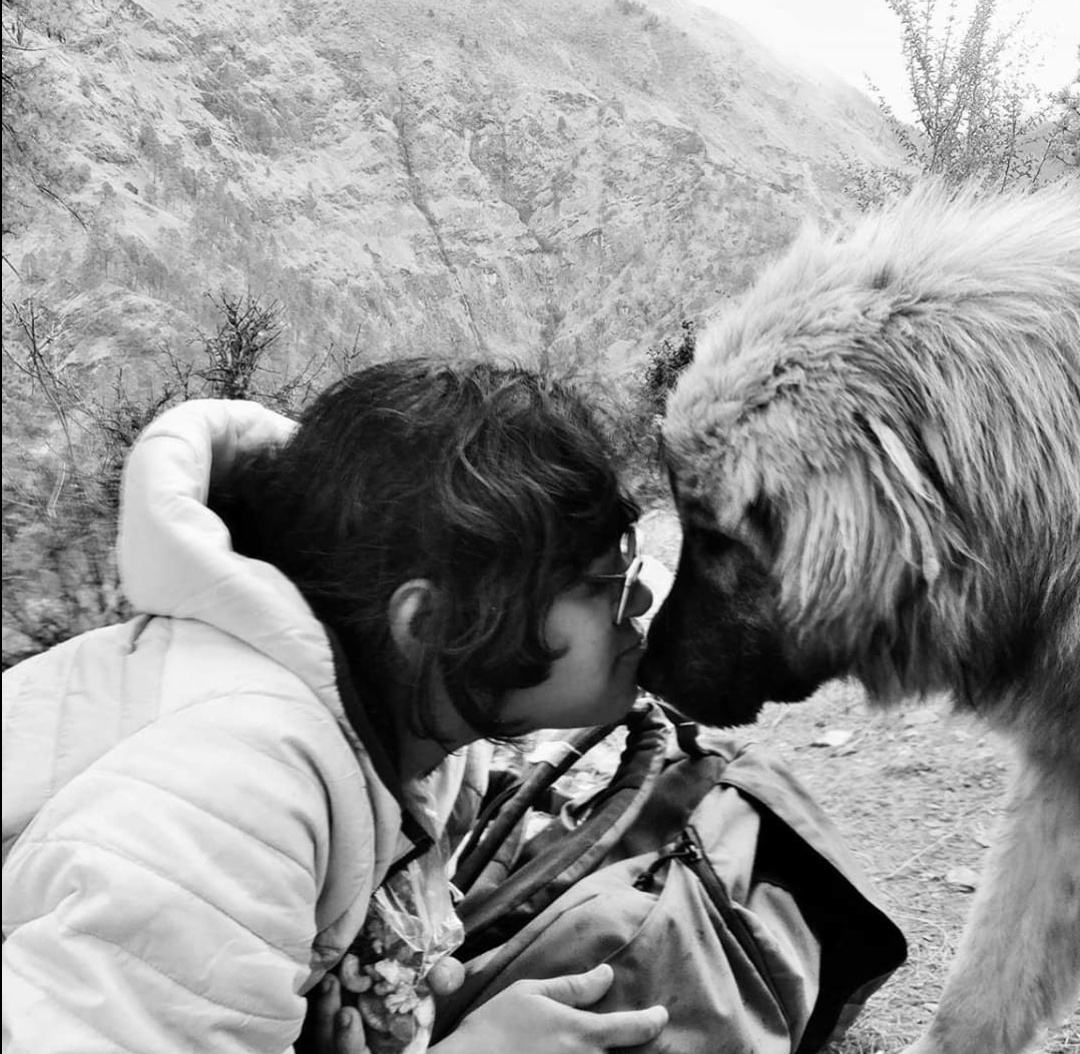India is a land of folklore. There is a story in every stone, a tale for every river, and a legend in each corner of this massive landmass. Our love for personification and storytelling is proudly admitted. It is one of the things that holds the fabric of our diverse culture together. Anthropomorphizing flora and fauna, reciting tales of supernatural powers, and finding a way to connect human life to every natural element by way of storytelling is an art that is part of our collective history. This art is our way of valuing the smallest of lives and finding a co-existence with our natural world.
The lay of the land is the biggest inspiration for our imagination. We named the source of the Ganga, Gaumukh (the cow’s mouth), whose milky stream nourishes the entire nation. We have the legend of the Swargarohini peak, which was climbed by the Pandavas on their journey to heaven. Then, there is the tale of Bhagiratha, who prayed for a thousand years for the waters to flow. Countless stories give life to each mountain, rock, and river, connecting our human story so intimately to our geography. The Gods, the demons, and everyone in between are all natural forms.
In this article, we are sharing some of our favorite legends from each of the eight states of Northeast India. These, we believe, add to the mystical allure and a sense of intrigue that are central to this region and hold so much insight about its people, their moral, social, and ethical value systems, and their overall beliefs.
1. Sikkim: The Soldier Who Still Guards Nathu La
In East Sikkim, the brother state of the Seven Sisters, there lies a temple dedicated to a soldier named Harbhajan Singh. He served in the Indian Army from 1965 up until his demise in 1968 at the age of 22. Singh died at the Nathu La Pass while facilitating a rescue effort. Legend has it that large-scale efforts were made to locate his body for days. These led to no results. However, days after the incident, Singh himself led the authorities to the location of his body by directing a fellow soldier in his dream. His body was found at the exact location as described by him. From then on, soldiers claim to feel his presence and report being instructed by him on matters of national security to this day.
This legend goes beyond a sense of ‘feeling his presence’ but seeps into reality in interesting ways. Harbhajan Singh still draws a salary from the government, takes a two-month-long leave to go to his village of Sardana on a first-class berth which is booked for him unfailingly each year. Three soldiers accompany him on this berth that remains empty and reserved in his name. This religious veneration has outlasted all his immediate colleagues - army jawans posted along the Nathu La Pass, to this day, claim to feel Singh’s presence in the area and look to him for warnings of expected wars along the border. Soldiers also believe that Singh keeps a close watch on them and admonishes anyone who fails to tow the disciplinary line as expected by him.

2. Meghalaya: The Tragic Tale Behind Nohkalikai Falls
Khasi Hills are a low mountain formation in the subtropical forests of Meghalaya. This region is inhabited mostly by people of the Khasi tribe. The Khasis encompass all seven tribes of Meghalaya, namely Khynriam, Pnar, Bhoi, War, Maram, Lyngngam, and Diko. They are known to be the world’s best storytellers. There is even a story behind how they turned into the best storytellers.
A long, long time ago, a Khasi man met with God, who gave him a document with all the religious and philosophical teachings and a guide to all the traditions God wanted the Khasi people to follow. The Khasi man, unfortunately, lost this very important document on his way back home. He feared facing the wrath of his people for being so careless, so he came up with a plan. He told his people that the teachings of God are fresh in his mind and that he would narrate them orally. And thus began the tradition of passing on wisdom in the form of oral stories for generations to come.
One of the many stories which has been a part of the Khasi people’s lives is that of Likai.
There once lived a woman named Likai in a village called Rangjyrteh in Meghalaya. After the death of her husband, Likai worked tirelessly as a porter to bring back food for her child. Because of this, she was forced to leave her daughter unattended for long hours during the day. Realising that she needed support to raise a child, Likai was forced to marry again so she could leave her daughter in the presence of her second husband while she worked.
Likai spent the little time that she got away from work caring for her daughter. This left her husband mad with envy for receiving neither love nor attention from her, which he felt entitled to. In a fit of jealous rage, one day as Likai left for work, he slaughtered the infant and cooked her flesh. When Likai returned, she found no one at home but a meal waiting for her. Since she was famished, she decided to eat the meal prepared by her husband before starting to look for her daughter. As Likai ate, she found a finger. Suddenly realizing what had happened, Likai went mad and started to run in a frenzy. She was so overtaken by grief and anger over losing her daughter and unknowingly cannibalizing her that she ran right off the edge of the plateau, plunging to her death.
Noh, which in Khasi means ‘to leap', ka, a prefix in Khasi for a woman, and Likai together form the name of the tallest waterfall in India, encapsulating the whole story of Likai’s unfortunate fate in its name (Noh-ka-likai).
Nohkalikai Falls is the tallest plunge waterfall in India. It falls 340M from a plateau into a pool with water of an unusual shade of green. This plateau is where Likai plunged to her end.

While there are stories of grief, the Khasi also have stories of evil demons who are a bane of human life. One such story is that of the human-eating Thlen. The legend of Thlen speaks of a huge serpent who lived in the caves of the modern-day Cherrapunji. He demanded human sacrifice in exchange for a promise to stop the mindless killings of humans himself. To this day, any murder or wrongdoing in the region is looked at as a deed done by the worshippers of Thlen as a way to feed him and his evil spirit.
A book called Folk Tales of the Khasis illustrates the tale of Likai and many other folk tales of the Khasi people. These tales form the basis of their identity. They illustrate how the Khasi people understood nature and the sacred relationship between nature and the people of this tribe.
3. Nagaland: Tiger, God & Man – The Naga Origin Myth
Of the many stories and many different versions of these many stories, the origin story of the Naga people finds its roots in a Mao folklore. It tells the tale of a mother who fell asleep under a banyan tree and was impregnated by the clouds that enveloped her. She gave birth to three sons: Tiger, God, and Man. It is believed that of her three sons, only Man took great care of her. When it came time for her to pass on, the three brothers quarreled over her inheritance. Her navel, the middle point, was considered to be the earth that the three brothers fought over. To settle the dispute, the mother decided to hold a competition. She created a podzii or a grass ball and said that the first one to touch this grass ball would be declared the winner. Because she favoured Man, she helped him by suggesting that he use a bow and an arrow to touch the ball the fastest. Man eventually won, but to the displeasure of his brothers, God, and Tiger. The three separated and man to this day follows traditions and practices to appease his two brothers for the three of them to be united once again.

4. Tripura: Unakoti and the Lost Hill of 99,99,999 Faces
A little over 150 km from the capital city of Tripura, in the Unakoti district of Agartala, lies a fascinating piece of history buried in the thick jungles of Jampui Hills. It is known as the ‘Lost Hill of Faces’. Unakoti translates to ‘one less than a crore’, which is a literal description of this forgotten place. Once a popular pilgrimage site for Lord Shiva, there are several stories that all lie at the intersection of mythology and history, each a narration of how this place came to be.
Unakoti or ‘one less than a crore’ refers to the 99,99,999 stone and rock sculptures carved in the rock faces inside this thick forest. Each of the carvings represents one god or goddess. Mossed staircases and circuitous bridges lead to a 30-foot-tall head of Shiva surrounded by all the other gods and goddesses. In one version of the story, this was Shiva’s doing. Once upon a time, Shiva was travelling to Kashi with 99,99,999 gods and goddesses in tow. Having come a long way, it was decided that they would rest for the night in these jungles and start again before dawn. But it so happened that Shiva was the only one who awoke on time to find everyone else still asleep. Shiva, the destroyer, known for his anger, was so enraged by this that he turned his entire entourage to stone, leaving them frozen in time and space.
Another version makes Parvati central to the story. It is said that the goddess asked a skilled craftsman to carve out one crore statues of all the gods and goddesses to appease Shiva. But the catch was that he must do it in one night. Even though the artisan worked tirelessly all night, he fell short of one status, giving this place its name ‘Unakoti’.
Whichever version stands closer to the truth, the fact remains that the beauty of the Lost Hill of Faces is testament to the craftsmanship of the people in this region.

5. Assam: The Black Magic Capital of India – Mayong
At first glance, nothing about this quiet village on the banks of the Brahmaputra River in Assam today would point towards its interesting past. Unless you start looking really close, hints of its mysterious ancestry start to make an appearance. Flanked by the lush forests of Pobitora Wildlife Sanctuary, which is home to the one-horned Rhino, this small village was once believed to be the seat of witchcraft and tantric practices. People from far and wide came to this small settlement to learn the art of black magic. If you happen to pay Mayong, in the Morigaon District, a visit, the elders of the village are sure to humour you with tales of personal experiences with black magic.
It is believed that the Middle Ages also saw the practice of making human sacrifices in the region. The village is rife with stories around mysteries of vanishing people, the finding of lost items, and the magical turning of humans into other forms. In an interesting tale, in the times of war, an army a 100,000 soldiers disappeared without a trace as soon as they entered Mayong. Nothing of this scale, but magic is still practiced in Mayong in the form of simple tricks of illusion. It is even used by some as a way of curing pain and illnesses.

As evidence of its intriguing past, it is believed that some houses still have scriptures written in an ancient language that is now known only by a few. These documents contain, they say, magic tricks and mantras practiced in the olden times. The museum in the village also showcases some of these writings, said to be instructions of bygone practices.
There are even multiple stories around how the village earned its name, Mayong. Some believe it comes from the Sanskrit word may, meaning illusion. Others believe it is a derivation of Moirang, which was a tribe from Manipur that was native to this village at a certain point in history. Yet others believe that the source of the name is the Dimasa word miyong, meaning elephant.
Whoever said the study of history is dry? Whoever believed looking to the past is a humdrum affair?
6. Mizoram: The Chhinlung Chhuak Origin Story
Chhinlung Chhuak translates to Coming Out of the Earth. This is the title of the mythical story of how the people of Mizoram came to be. The story speaks of a goddess named Khuanu who created the world, humans, animals, and trees. It was a bountiful world, all her creatures spoke a common tongue and got along really well with each other. But each time darkness fell, the world would turn to chaos. Little boys and girls turned into monkeys, and elders turned into birds. The goddess, the creator of the earth, fearing that she might lose all her human creations, locked them up under a massive rock, Chhinlung. Once she was sure there were enough humans to thrive on Earth, she lifted the huge rock to let them out. They raced to the exit in huge numbers. The commotion and noise caused by this release overwhelmed Khuanu, and she dropped the rock once again, trapping the rest of the people inside. The ones who were released from the many tribes of Mizoram.

7. Arunachal Pradesh: Cosmic Eggs and Earth’s Birth
There are over two dozen tribes in Arunachal Pradesh, each with their version of how the earth came to be. One of them goes something like this. At the beginning of time, there was nothing – not Earth nor sky. There are only two eggs. They shone like gold and rotated around each other. Once upon a time, they both collided and broke into pieces. From one was born the earth and from the other, the sky. It is said that the earth was too big for the sky to embrace it, so it pleaded with the earth to make itself smaller. The earth obliged and shrank itself, from which the mountains and hills were born. When the sky and the earth finally embraced each other, all the animals and trees were born from their union.

8. Manipur: How a Princess Started Silk Weaving Culture
The tradition of sericulture has an old association with the state of Manipur. The state produces all 4 types of silk, namely mulberry, tasar, eri, and muga. Each kind of silk is produced in different regions of the state. One of the many interesting myths from the state tells a tale of how this art was born.
It is believed that a long, long time ago, a Burmese princess married a common soldier from the rival kingdom of Manipur. When she moved there after marriage, she realized that her husband and his mother were common folk who lived a modest life. She wanted to do something to turn their fate around. For this, she came up with a plan. She asked her husband to prepare a room for her with no windows. She then proceeded to collect mulberry leaves each day, lock herself in her closed room, and get to work. After a long time of doing this every single day, she managed to finish her beautiful silk cloth, which glowed like the sun. She then asked her husband to sell it in the market, and as she rightly assumed, they got a handsome price for it. This soon turned into routine, where the princess would collect mulberry, get to work, and have her husband sell her creations in the market until they managed to accumulate a large sum of fortune.
This is how weaving became a household engagement in the villages of Manipur

These are only some of our favourite tales of myths and legends from the states of Northeast India. We especially love how each tale is tied so closely with its geography – how it defines the lives and practices of its people by binding them to a common past even though it may be imagined. If you have any more interesting myths and legends from these eight states, we would love to know.
Love stories that mix adventure and myth?
Drop your favorite regional legend in the comments, or explore trekking in Northeast India for your living folklore.


















